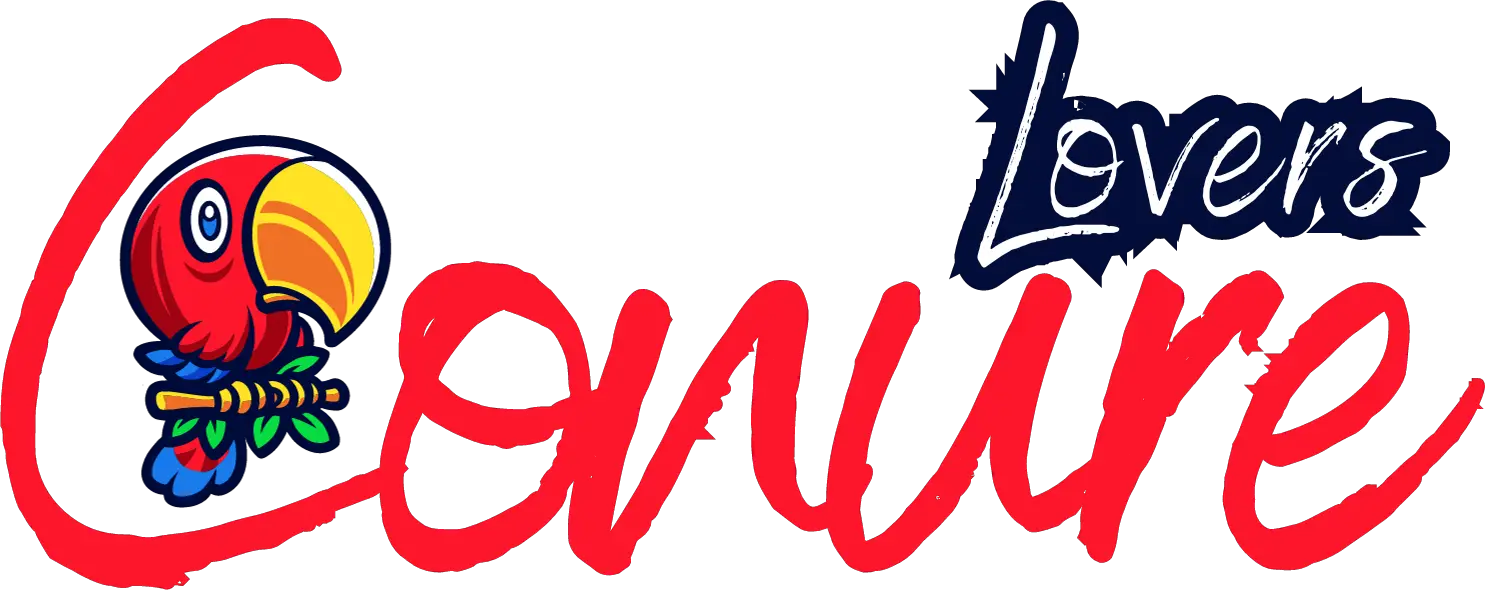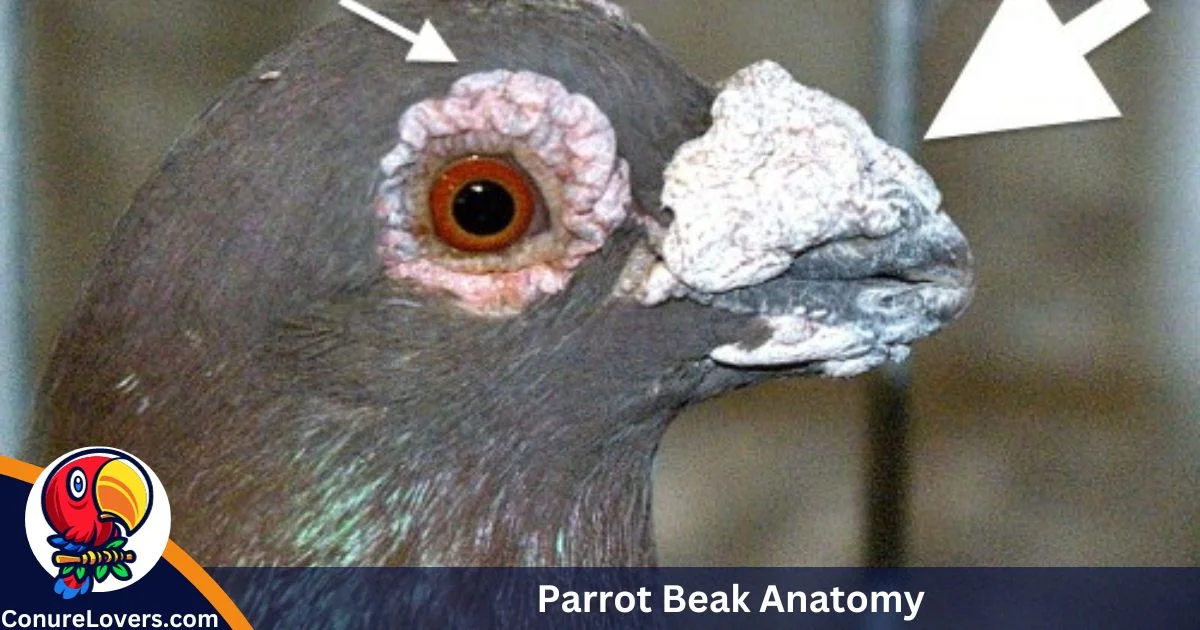A parrot beak is super important for them to survive. Let’s find out more about how a parrot’s beak is built, some problems it might face, and some cool facts!
Parrots stand out as the quirkiest birds in the avian world, and there are plenty of reasons why! One of the coolest things is their unique hooked beaks, complete with a nifty little hole underneath. Some parrot species even boast a special brush or bristle-tipped tongue – talk about fancy features!
Now, here’s the teamwork: that tongue and beak of theirs know how to groove together. The shape of a parrot’s beak is a big deal. Why? Because it’s like a dynamic duo with the tongue, helping them grab, play with, and chow down on their food. Picture a well-choreographed dance between beak and tongue!
This piece is your ticket to the parrot beak 101. Dive into the nitty-gritty of their anatomy, discover the secrets behind their beaks, and get the lowdown on how to keep those beaks in tip-top shape. Ready for a parrot beak adventure? Let’s roll!
Parrot Beak Anatomy
Parrots sport an astounding beak, perfectly crafted to meet their every whim. Often hailed as hookbills, these birds earn their nickname because, well, their beaks are practically shaped like hooks! Just like us, humans, parrots rock two jaws: the upper one, called the maxilla, and its sidekick, the lower jaw or mandible.
Now, here’s a quirky detail – their nostrils aren’t just any old holes; they’re perched on a fleshy spot called cere, right smack between the head and the beak. Think of it as the bird’s personal touch of flair. These nostrils, also known as the nares, are where the magic happens!
Maxilla
The maxilla plays top dog as the upper jaw in a parrot’s facial game. Linked to the bird’s skull by the craniofacial hinge, this is where the cool moves happen. Parrots break the norm by pulling off an independent upper beak stunt, cranking it upwards (totally noticeable during a good yawn), all thanks to that handy craniofacial hinge.
This nifty trick lets them juggle food in their mouths with ease and muster up enough power to crack open nuts and seeds. Now, that’s what I call beak flexibility!
Wrapped around the maxilla is a fancy-sounding keratinous sheath, known as the rhinotheca. But that’s not all – inside the maxilla, some parrots boast tiny ridges, like a built-in nail file. These subtle features are the bird’s secret weapon for crushing and “chewing” their food effortlessly. Imagine it as their very own culinary multitool.
And let’s talk about tips! The maxilla doesn’t just fade away; it tapers off into a sharp point. Now, depending on the parrot species, you might encounter different beak vibes – some with a slim, tapered beak, others rocking a wider one.
Word on the street (or from some bird owners, at least) is that parrots with thinner beaks might be sharper when they decide to take a nibble. Haven’t personally fact-checked this tidbit, though!
Read Also: Why Does My Parrot Bite Me (And How To Avoid It)?
Mandible
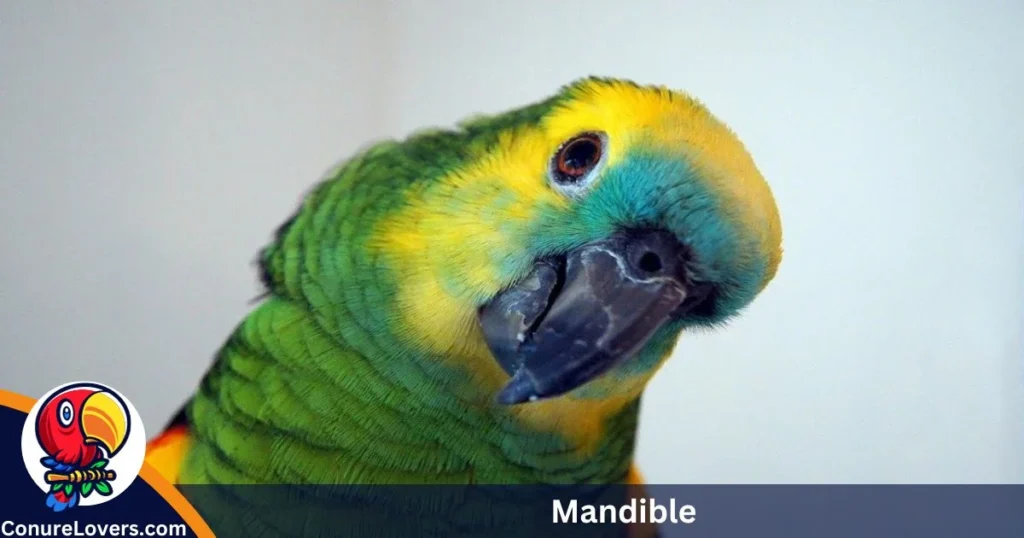
The mandible is the lower jaw, or beak, of a parrot, and it’s like the Swiss Army knife of their toolkit. This essential tool teams up with the maxilla for a variety of tasks. From supporting the parrot as it climbs around to picking up food and toys, having a sip, doing some self-grooming (preening), and more – the mandible is the bird’s go-to gadget.
Now, let’s talk about shape. The mandible is no ordinary jaw; it’s shaped like a cup with two nifty curved tips at the end. These curves aren’t just for show – they’re the bird’s secret weapon for grabbing onto food and acting as a handy focal point to crush it. Talk about a versatile beak!
In an ideal world, the mandible should play nice, aligning centrally with the maxilla and snugly sitting underneath it, no underbites allowed. However, in some cases, the upper and lower beak parts might throw a misalignment party. While this can be corrected to some extent in a young bird, it becomes a trickier task when the bird grows older.
Oh, and let’s not forget about fashion! Some birds rock a style where the mandible shows off a different color than the maxilla – totally normal in certain species. Take the Indian ringneck parakeet, for instance. In its wild green mutation, it struts with an orange-red upper beak and a nearly all-black mandible. Not every Indian ringneck joins the color variation party, though – lutino birds keep it consistent with fully red beaks for both the maxilla and the mandible. Talk about a beak with style!
Rhamphotheca
The rhamphotheca, in parrot terms, is the fancy name for the outer covering or the keratinous sheath of their beak. Now, let’s break it down further: the covering on the upper beak (maxilla) is called the rhinotheca, and the lower beak (mandible) rocks the name gnatotheca. Think of it as the parrot’s version of our fingernails – made of the same stuff!
Just like our nails, the rhamphotheca is a growing sensation. It keeps extending, much like human fingernails, ensuring the beak stays in top-notch condition both in terms of surface and length.
Parrots are the DIY enthusiasts of the bird world – they grind, file, and rub their beaks during their daily shenanigans, naturally wearing them down. Thanks to this keratinous growth, parrots can effortlessly replace their worn-down beaks over time.
Now, let’s talk sensitivity! The rhamphotheca isn’t just for show; it houses a bunch of nerve endings, making the upper beak the star of the show in terms of sensory ability. And hey, there’s a good blood supply in the beak too – talk about a beak that’s not just for looks!
Interramal Space
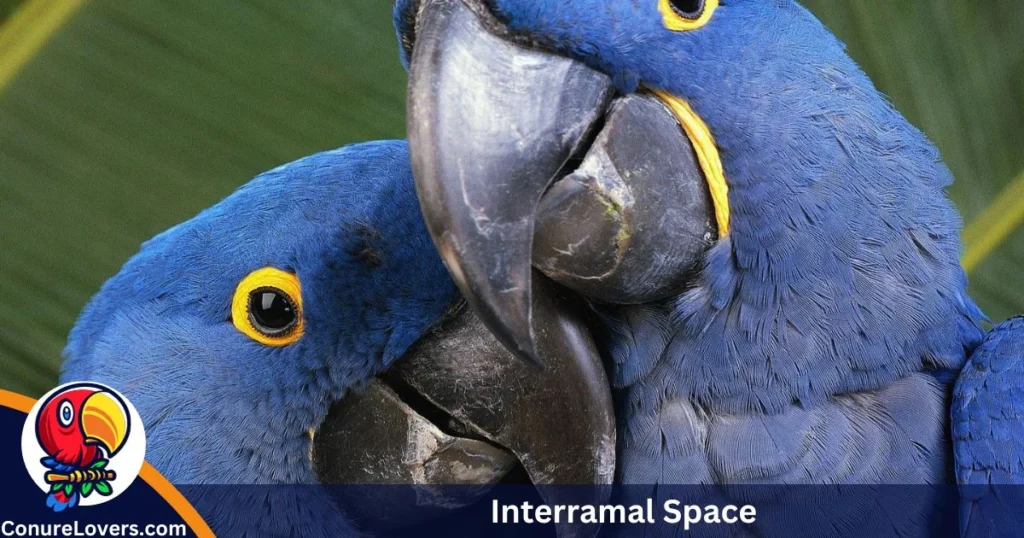
Ever noticed that little gap between your parrot’s lower beak and its neck? It might seem like a “**hole**,” but fear not – it’s not really a hole. Think of it more as a clever design feature. This space allows the lower beak to move around with ease, creating a nifty gap that’s connected to the parrot’s mouth system.
Why is this gap handy, you ask? Well, it lets your feathered friend open and close its beak without awkwardly pressing the hard edge against its neck. Smart, right? It’s like a built-in flexibility perk for their beak maneuvers!
Cere
The cere and nares of a parrot hang out on the outer fleshy part of the beak. Now, in the bird world, especially among budgies, the cere takes center stage. Its prominence and color can spill the beans on a few things.
For our feathery friends, like budgies, the cere steals the show. In the world of budgie cere chronicles:
1. Age Decoder: Most budgies rock a pink cere when they’re young, making it a bit tricky to tell their age before they hit maturity.
2. Gender Clues: After the coming-of-age party, female budgies often flaunt brownish, pink, or light blue ceres, while their male counterparts go all-in with bright blue (except for those sneaky recessive pied budgies).
3. Love Mode: When love is in the air, male budgies’ ceres turn a deep shade of blue, signaling they’re ready to hit the dating scene.
4. Mutation Mysteries: Now, here’s where it gets interesting. Recessive pied males throw a curveball with a pink cere even when they’re all grown up and looking for love.
Despite this avian soap opera, it’s no walk in the park to figure out the gender solely based on cere color. It’s like Mother Nature’s mystery game!
Hold on, there’s a serious note too – the color of the cere isn’t just for looks. If you spot an unusual hue (not part of the norm), it might be a red flag for illness. So, keep an eye out, and if things seem off, it’s a cue to fly over to the vet for a checkup.
Nares
All parrots come equipped with nostrils, charmingly referred to as nares, and the prominence of these can vary from bird to bird.
The nares, those little nostril openings, make their debut on the cere, just above the upper beak, showing off in pairs. In some parrot species, they take the spotlight, fully visible, while in others, they might be a bit shy, hiding behind a delicate curtain of feathers. Take a look at my lovebird, Loki – her nares are subtle, tucked beneath a thin layer of feathers, giving the illusion of no nostrils. On the flip side, my green-cheeked conure, Bibi, is all about making a statement with those prominent, feather-free nares.
Now, onto the care routine! A healthy parrot’s nares should be clear, resembling a neat little hole with some fleshy structures inside. Resist the urge to play parrot nose surgeon – those structures are normal! If in doubt, leave it to the experts, like an experienced bird handler or a vet, to avoid any unintentional birdie injuries.
Keeping things clean is a priority, and parrots are pretty self-sufficient in this department. They might engage in some discreet nose-picking with a toenail, followed by a dignified sneeze. Baths are also prime time for nare maintenance – the splashing water helps sweep away any debris.
However, if you notice your parrot’s nares going rogue – growing or facing obstructions like stone-like growths – it might be dealing with a rhinolith. Time to consult the bird doctor for a little surgical intervention.
Egg Tooth
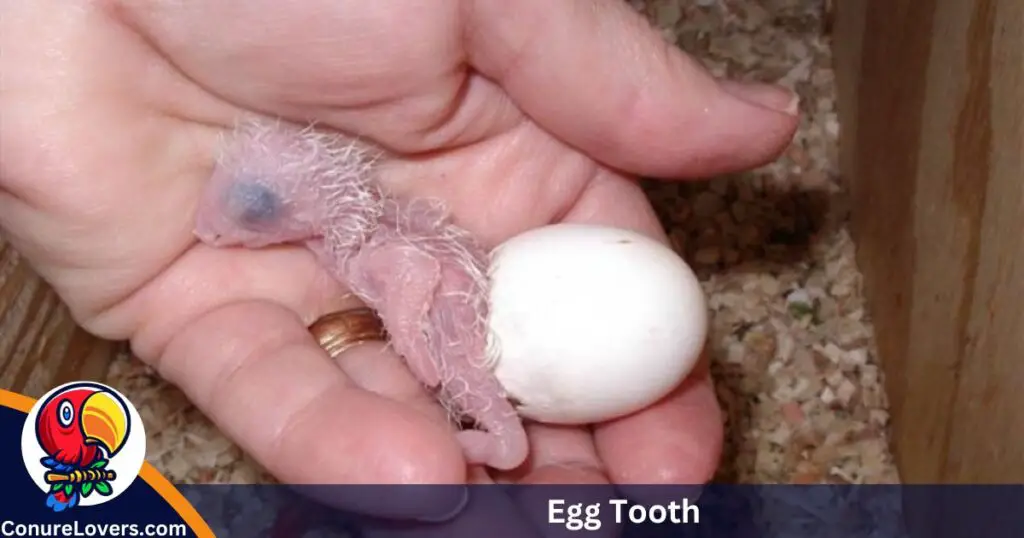
Baby birds come into the world with a handy tool called an egg tooth on their beaks. This small, hard protrusion serves a crucial purpose – breaking through the egg membrane and shell during the hatching process.
As the chick gets ready to make its grand entrance, the egg tooth comes to the rescue. First, it helps break the egg membrane, allowing the chick to access the air sac between the membrane and the shell.
Taking a breather in this air space, the chick then starts the process known as “pipping,” using its trusty egg tooth to crack through the eggshell. This continues until a hole is formed, providing the chick with an exit route into the world.
Now, here’s the cool part: for most birds, the egg tooth has done its job and serves no further purpose, so it typically falls off soon after hatching.
However, in the case of some feathered friends like finches and sparrows, the egg tooth becomes a permanent part of their beak, getting incorporated back in. For us admirers of young parrots, catching a glimpse of the egg tooth is a rare treat, usually only possible when observing a freshly hatched chick.
What Are The Functions Of A Parrot’s Beak?
Parrots wield their beaks as versatile tools for various aspects of their lives:
- Eating: Their beaks are short and curved, ideal for cracking open seeds and nuts.
- Drinking: The beak serves as a scoop, allowing them to gather water into their mandible for a refreshing sip.
- Moving Around: Parrots use their beaks to climb surfaces and trees, showcasing their adaptability in navigating their surroundings.
- Self-Care: Beaks play a vital role in feather preening and other grooming activities, ensuring they stay spick and span.
- Breeding: For nest-building, the beak becomes a valuable tool, enabling the bird to shred and collect nesting materials to construct cozy homes.
- Feeding Young: When it comes to parenting, the beak is a crucial instrument for feeding and caring for their young ones.
- Self-Defense: In times of threat, the beak transforms into a natural weapon, aiding parrots in defending themselves against potential dangers. 🦜⚔️🍴
How To Identify A Healthy Beak
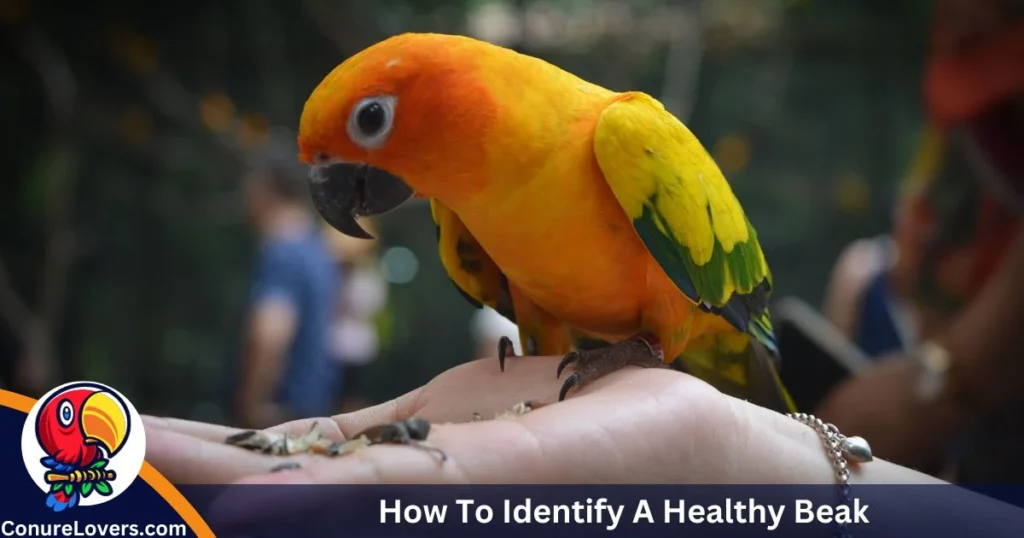
Maintaining your parrot’s beak health is crucial for its overall well-being, as it affects essential functions like eating, preening, defending, and communicating. Here are signs of a healthy beak to keep an eye on:
- Alignment: Both the upper and lower beak should align properly.
- Positioning: The lower beak should sit correctly underneath the upper beak, without protruding.
- Length: Ensure that both beaks have an appropriate length, neither too long nor too short.
- Surface Condition: Look for any strange bumps, grooves, holes, or chipped-off parts. The beak should generally appear smooth, with normal wear and tear, including some flaking and light scratches. Excessive flaking or deep scratches may signal an issue.
- Color: The beak should maintain its original color, with no unusual staining, apart from what may result from food.
Internal and External Health: There should be no signs of internal or external damage, such as dents, bleeding, or bruising, either on the surface or underneath.
If you notice any deviations from these indicators, it’s advisable to seek prompt medical attention for your feathered friend to address potential health concerns. Keeping a keen eye on these aspects ensures your parrot can enjoy a happy and healthy life.
Parrot Beak Health Conditions
If you’re eager to delve deeper into the world of parrot beak health and explore various conditions, be sure to check out our comprehensive article on beak issues! It’s packed with valuable insights and information to help you understand and address any concerns related to your feathered friend’s beak. Happy reading!
Final Notes
Understanding parrot beak anatomy is crucial, as it helps you comprehend its functionality and the vital role it plays for your parrot. Regularly check for signs of injury or deformity, and make sure the beak maintains an appropriate length to avoid hindering its normal function.
Stay tuned for more articles on parrot anatomy to enhance your knowledge and strengthen your bond with these feathered companions!

I’m Justin Taylor, your Conure Buddy Guide from “Conure Lovers.” Join me on a journey to discover simple and joyful ways to care for your feathered companion. Let’s make each day with your conure special!
